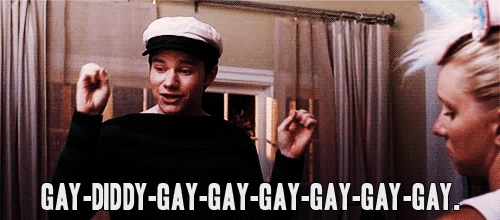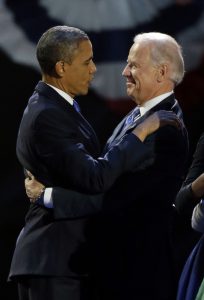
Sadomasochistic (SM) sexual practices often involve the fantasies of humiliation and pain, and the word ‘no’, or any form of resistance may simply be a part of the whole act. In certain SM situations, if the submissive partner offers no resistance, the dominant partner cannot enjoy the feelings of forcing the powerless partner, and the submissive partner is also unable to experience the feeling of being overwhelmed and dominated. Hence, the word ‘no’ or any emoji that may mean resistance in everyday scenarios would not be a good choice as it can be seen as simply a form of resistance that is desired and wanted in the context of SM sexting (Cameron & Kulick, 2003). In this situation, ‘no’ may very well mean ‘yes, yes, yes!’. However, this does not mean that every utterance is opposite in its meaning. When the submissive says ‘yes’, s/he might actually mean what s/he is saying. They might be getting really into the sexual act, or they may be telling the dominant partner to continue punishing them. Hence, emojis that signify ‘yes’, ‘go for it’, or ‘okay’ of any form would not be considered good safe words either.
The thing about safe words in SM sex is that it has to be outlandish, or unexpected, or something you would never utter in sex. It could also be any word that brings about passion-killing images or thoughts, such as ‘Donald Trump‘, as found in a survey of 1280 couple across the world on their favorite safe word. It was suggested that the thought of the orange reality star would extinguish any flame of passion. Of course, that is not a common safeword, and more common ones include ‘red’, ‘banana’, and ‘pineapple’.
Hence, for SM sexting, ‘safe emojis’ should also be things that are similarly unexpected. However, one thing to note is that things that may seem like good safe words in real-life sex play might not be great in emoji-form. It is more and more common nowadays for emojis to be used to represent something entirely different. The eggplant ‘?’ emoji has been commonly used to depict the penis emoji. As such, one can gather that its phallic shape is one of the reasons why it is used for such representation. It is not uncommon for fruits and vegetables emojis to be used in sexting, thus, the cucumber, due to its phallic shape, would not be a good safe emoji, though it would be a great safeword in SM sex.
Any other emoji commonly used for sexting would be bad ‘safe emojis’ to be used in SM sexting. Any emoji depicting things that may be used in regular SM sex would also be bad ‘safe emojis’ too. This would include the chain emoji ‘⛓’ as well as emojis with the mouth being covered ‘?’ and ‘?’.
Hence, the best emojis would be those that invoke non-sexual thoughts, and would not play into the whole SM sexting context. One good example would be that of the poop emoji ‘?’, or the toilet bowl emoji ‘?’. These emojis are non-sexual, and unless the individual is into sex involving fecal matter, these would distract from the sexting, and indicate that the individual is uncomfortable with the going-ons of the sexting. Another good emoji would be the pill emoji ‘?’, as it could mean that the person feels turned off or sick, and wants to stop. Two other emojis that could be possibly used as good ‘safe-emojis’ are the ‘?’ and ‘?’. They seem unrelated enough for SM sexting to be good ‘safe-emojis’, but not too much of a mood killer to stop the sexting completely.
—
Locker room talk seems to be a great excuse for men to be rude, and talk about other genders, races, and minorities in a demeaning way, but not be held responsible. All three definitions agree that locker room talk is usually sexually charged, and would not be accepted in public discourse. However, two out of three definitions define locker room talk as language that men use while one defines it as language used among those of the same gender group.
Is this all there is to locker room talk?
There have been studies that discuss how gender is performed through language, and one way of doing gender is by talking about sex (Cameron & Kulick, 2003). One could say that Trump’s sexist talk could be a way to perform his gender through homosocial talk, where men try to bond together by emphasizing a gender imbalance that give men the pleasure of dominating. His use of demeaning language on women degrades the woman, while maintaining his status, and even boosting his sexual prowess. His describing women in a demeaning and sexual way is also an attempt to perform his heterosexuality. He talks about how he is attracted to beautiful women, and how he can get anything he wants as he is a star. At the same time, he insinuates that he takes anything he wants as he is a powerful man, once again performing his gender. He wants to blend in with the rest of the men, engaging in this form of homosocial bonding while explicitly denying any form of homosexuality by hyper-focusing on his attraction to women (Cameron & Kulick, 2003).
Trump tried to dismiss his conversation as locker-room-banter, and according to urban dictionary, this would be a good example of locker room talk. This dismissal was faced with strong objections from athletes, as they did not feel like that was not what was commonly spoken about in their locker rooms. Many athletes spoke out about this, saying that Trump was trying to justify something that was not normal by saying that it was something men talk about behind closed doors, suggesting that men talk about this all the time. This is not the case as many men have come out saying that the normal talk in locker rooms are usually about personal things in their lives, and are rarely sexual.
Trump’s conversation should not be classified as locker room talk, and instead, be classified as a form of homosocial bonding. It fits all the criteria, where he performs gender and heterosexuality by describing how much more dominant he is compared to the other ‘weaker’ gender, and emphasizing his heterosexuality by discussing how he is just attracted to beautiful women and how they would allow him to do anything sexually because he is a powerful man. His use of the term locker-room-banter is simply a way to distract from his sexism and suggest that he only spoke like that as he thought it was in confidence.
References:
Cameron, D., & Kulick, D. (2003). Language and Sexuality. New York: Cambridge University Press.










